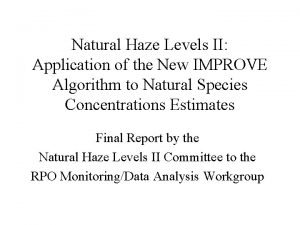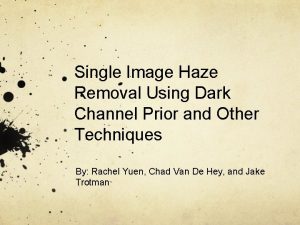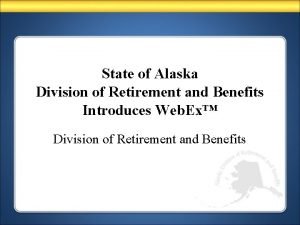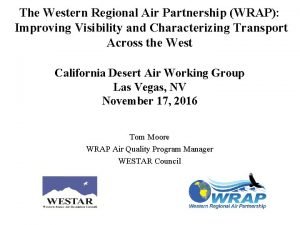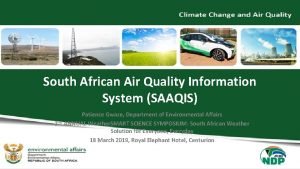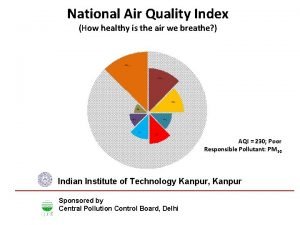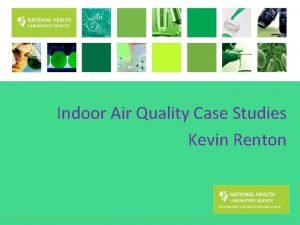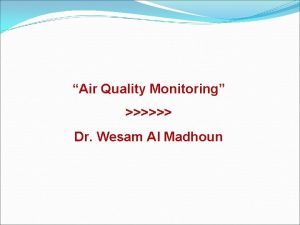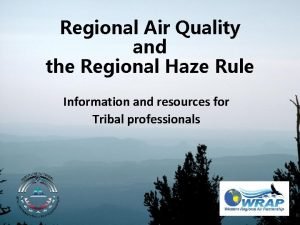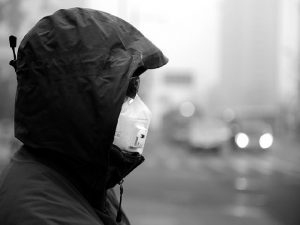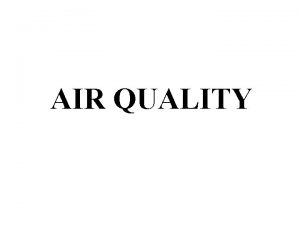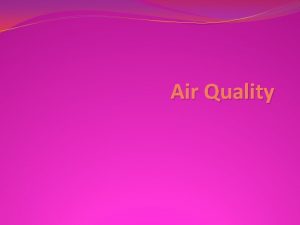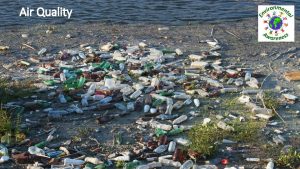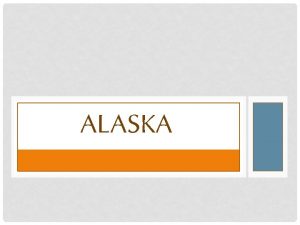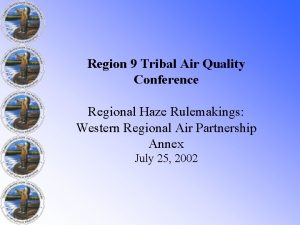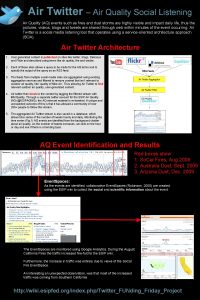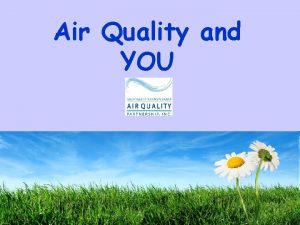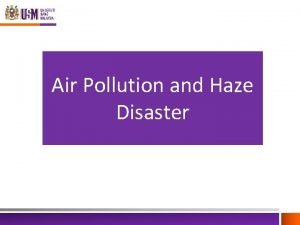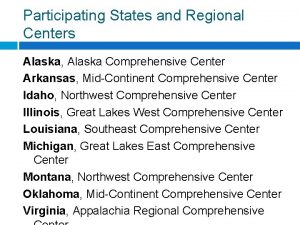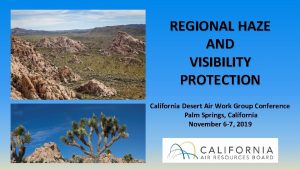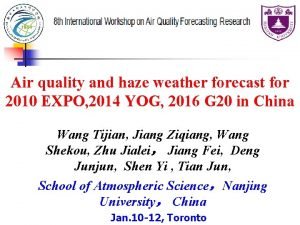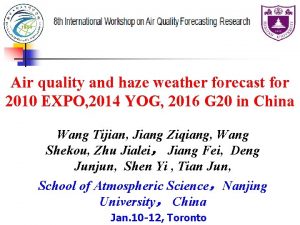Alaska Regional Haze Overview Division of Air Quality


























- Slides: 26

Alaska Regional Haze Overview Division of Air Quality Alaska Department Of Environmental Conservation


Presentation Overview • Analysis: Haze Characterization at Class I Areas • Analysis: Transboundary Sources, Seasonal Patterns • Reflections: What can’t we control? • Summary: What do we need?

Analysis: Haze Characterization at Class One Areas


Regional Haze Impacts - Denali


Regional Haze Impacts - Denali

Regional Haze Impacts - Denali

Regional Haze Impacts - Tuxedni

Regional Haze Impacts - Tuxedni

Regional Haze Impacts - Simeonof

Regional Haze Impacts - Simeonof

Analysis: Transboundary Sources and Seasonal Patterns

Arctic Haze • Air enters Alaska from the Arctic • Occurs in winter • Layered haze • Characterized by sulfate, metals and light absorbing carbon

Asian Dust • Air enters Alaska from Asia, especially China • Occurs in spring • Layered haze • Characterized by soil elements and metals

Wildfire Smoke • Wildfires in Alaska, Canada, and Siberia produce smoke that reaches the park • Occurs in summer • Layered or regional haze depending on the fires’ locations • Characterized by potassium and organic and elemental carbon

Reflections: What can’t we control?






Summary: What do we need?

Modeling of emissions plumes and back trajectories Emissions from marine shipping Monitoring of transboundary sources Understanding of biogenic emissions- climate, fire, wetlands and land cover modeling

 The gray-brown haze often found over large cities is called
The gray-brown haze often found over large cities is called Natural haze
Natural haze Single image haze removal using dark channel prior
Single image haze removal using dark channel prior State of alaska division of retirement
State of alaska division of retirement Hubungan air dengan tanah
Hubungan air dengan tanah Data cleaning problems and current approaches
Data cleaning problems and current approaches Data quality and data cleaning an overview
Data quality and data cleaning an overview Data quality and data cleaning an overview
Data quality and data cleaning an overview Western regional air partnership
Western regional air partnership 369 times 2
369 times 2 Long division rational functions
Long division rational functions Short division and long division
Short division and long division Math synthetic division
Math synthetic division Quality assurance vs quality control
Quality assurance vs quality control Quality management pmp
Quality management pmp Pmp gold plating
Pmp gold plating Define seminar in nursing management
Define seminar in nursing management Compliance vs quality
Compliance vs quality Quality assurance concepts
Quality assurance concepts Quality gurus
Quality gurus Quality is free
Quality is free What is tqm
What is tqm South african air quality information system
South african air quality information system Air quality index calculation
Air quality index calculation Air quality renton
Air quality renton Ambient air quality standards
Ambient air quality standards St louis air quality
St louis air quality

